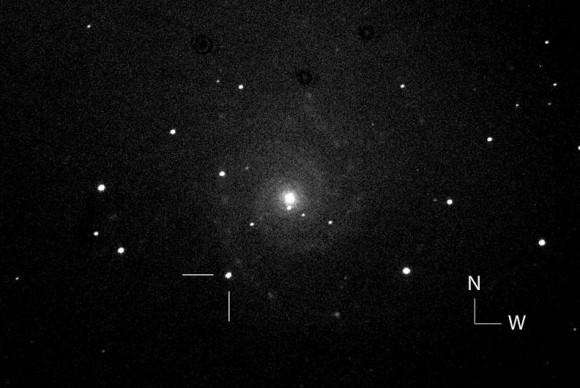
© Fabio MartinelliOne of the first photos of the possible new supernova (at tick marks) in the nearby galaxy M74 taken by the Italian Supernova Search Project. The object is located 93″ east and 135″ south of the galaxy’s center. Click to learn more about the search group.
I love this galaxy. Not only does
M74 display a near perfect spiral form but if this latest supernova is confirmed, it will be the third to "go boom" in the galaxy in just 11 years. The new object, designated PSN J01364816+1545310, was discovered blazing near 12.4 magnitude by the
Lick Observatory Supernova Search at Lick Observatory near San Jose, Calif. "PSN" stands for "possible supernova" and the long string of numbers give the object's position in the sky using the celestial equivalents of latitude and longitude.
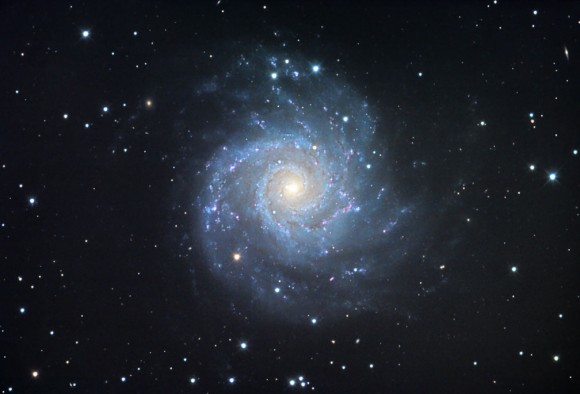
© Jim MistiM74 is a classic spiral galaxy with arms that appear to unwind from a bright, star-packed nucleus. Located 32 million light years away in the constellation Pisces, M74 contains about 100 billion stars. The spiral arms are dotted with dense star clusters and pink clouds of fluorescing hydrogen gas.
The Lick search uses a fully robotic or automated 30-inch (76 cm) telescope dedicated to scanning the skies for new supernovae. It nailed M74′s latest exploding star on July 25. Two previous supernovae flared in the galaxy -
SN 2002ap and
SN 2003gd - and rose to 12th and 13th magnitude respectively before fading away into obscurity.
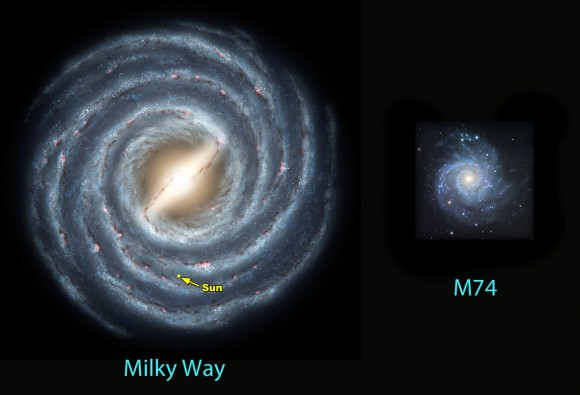
© NASA (left) and Jim MistiSize comparison of our Milky Way spiral galaxy with M74. The Milky Way measures about 100,000 light years across; M74 about 30,000.
Three's the charm as they say. While we're still waiting for confirmation on the type of star that blew up it's likely either a massive supergiant star that ran out of fuel at the end of its life or a planet-sized white dwarf star that self-destructed after putting on too much weight.
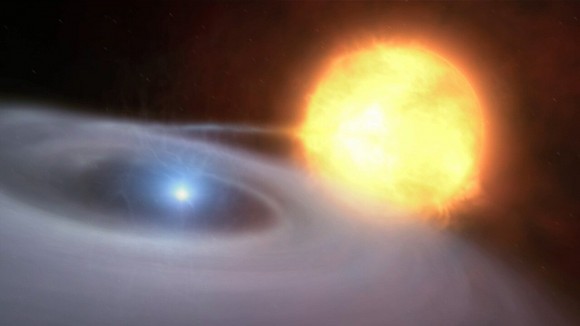
© ESO / M. KornmesserIllustration of a white dwarf feeding off its companion star.
When a supergiant star with at least 8 times the mass of the sun depletes its fuel reserves it implodes and explodes in a supernova blast. A white dwarf ends its life when it draws enough material from a nearby companion star to become unstable. Once it tips the scales at 1.4 times the mass of the sun, the dwarf ignites in a titanic thermonuclear explosion. Picture a hydrogen bomb the size of the Earth with the mass of the sun. A big boom indeed.
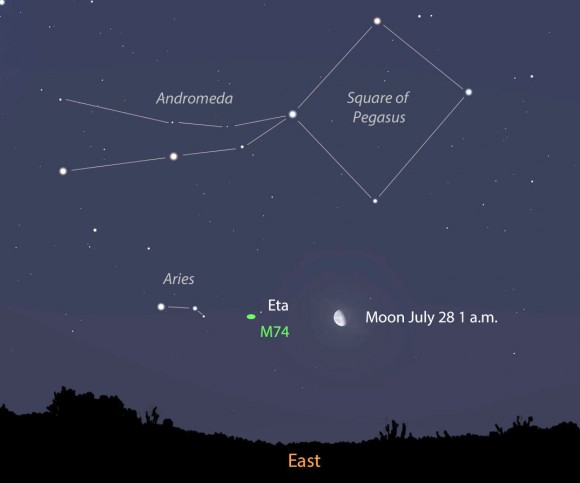
© StellariumThe galaxy M74, the 74th entry in 18th century astronomer Charles Messier’s catalog, is found about 1.5 degrees east-northeast of the star Eta Piscium just to the right of the small constellation Aries the Ram. The map shows the sky around 1 a.m. tomorrow morning facing east.
Additional photos of the "new star" have been taken and astronomers are already studying the object's light, so we should know soon exactly what exploded. Meanwhile, amateur astronomers with 8-inch and larger telescopes will have no problem spying the possible supernova once the last quarter moon departs the vicinity. It's located 93″ (1.5′) east and 135″ (more than 2′) southeast of the galaxy's core. The map and photo will help you track it down.
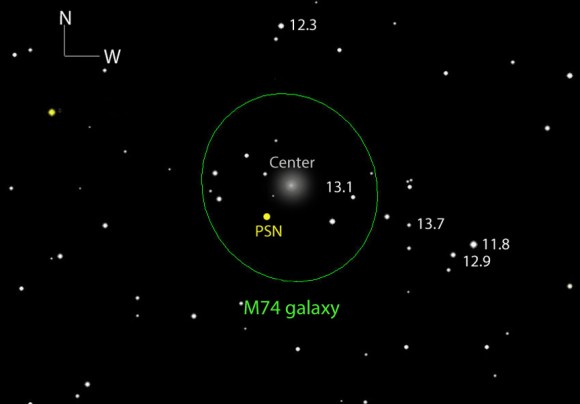
© Map created with Chris Marriott’s SkyMap softwareThis map measures only about 1/2-degree wide and shows the galaxy up close with the PSN (possible supernova) marked. Selected star magnitudes from the AAVSO are shown to help you navigate to the object as well as estimate its brightness. North is up, west to the right.
While M74 is relatively bright and appears spectacular in long-exposure photos, it looks like a large, dim featureless glow in smaller telescopes. Be patient and take your time to "star hop" to the possible supernova using the more detailed map. Matter of fact, you may want to wait until Tuesday morning or later to look. That's when the waning moon will finally depart the area. Good luck meeting the latest star to mark the end of its life with the biggest blowout of all.









Reader Comments
to our Newsletter